Effects of Solution Temperature on Tensile Properties of a High γ′ Volume Fraction P/M Superalloy
Abstract
:1. Introduction
2. Materials and Methods
3. Results
3.1. Initial Microstructure
3.2. Tensile Properties
4. Discussion
5. Conclusions
- (1)
- The solution and aging treatment had a strong influence on the morphologies and distribution of γ′ precipitates. As the solution temperature increased from 1160 °C to 1200 °C, the size of the γ′ precipitates obviously decreased.
- (2)
- At 650 °C tensile temperature, more quasi-cleavage facets appeared in the crack nucleation and crack propagation zones, and elongation after fracture decreased. However, more ductile intergranular tears appeared in the crack propagation zones at 700 °C, contributing to the improvement of tensile ductility.
- (3)
- For the high γ′ volume fraction P/M superalloys, the strength contributed by precipitation strengthening was the largest among the three mechanisms, and HT-3 had the highest yield strength because of its fine distribution of γ′ phase caused by the high solution temperature.
Author Contributions
Funding
Data Availability Statement
Conflicts of Interest
References
- Collins, D.M.; Stone, H.J. A modelling approach to yield strength optimisation in a Nickel-base superalloy. Int. J. Plast. 2014, 54, 96–112. [Google Scholar] [CrossRef]
- Tan, L.; Huang, Z.; Liu, F.; He, G.; Wang, X.; Huang, L.; Zhang, Y.; Yiang, L. Effects of strain amount and strain rate on grain structure of a novel high Co nickel-based polycrystalline superalloy. Mater. Des. 2017, 131, 60–68. [Google Scholar] [CrossRef]
- Tan, L.; Li, Y.; Deng, W.; Liu, Y.; Liu, F.; Nie, Y.; Jiang, L. Tensile properties of three newly developed Ni-base powder metallurgy superalloys. J. Alloy. Compd. 2019, 804, 322–330. [Google Scholar] [CrossRef]
- Liu, F.; Wang, Z.; Tan, L.; Xiao, X.; Li, Y.; Li, X.; Zhang, H.; Zhu, L.; Jiang, L.; Liu, Y. Creep behaviors of fine-grained Ni-base powder metallurgy superalloys at elevated temperatures. J. Alloy. Compd. 2021, 867, 158865. [Google Scholar] [CrossRef]
- Liu, F.; Wang, Z.; Wang, Z.; Zhong, J.; Zhao, L.; Jiang, L.; Zhou, R.; Liu, Y.; Huang, L.; Tan, L.; et al. High-Throughput Method–Accelerated Design of Ni-Based Superalloys. Adv. Funct. Mater. 2022, 32, 2109367. [Google Scholar] [CrossRef]
- Kim, Y.K.; Kim, D.; Kim, H.K.; Yoon, E.Y.; Lee, Y.; Oh, C.S.; Lee, B.J. A numerical model to predict mechanical properties of Ni-base disk superalloys. Int. J. Plast. 2018, 110, 123–144. [Google Scholar] [CrossRef]
- Locq, D.; Caron, P. On some advanced nickel-based superalloys for disk applications. Aerosp. Lab 2011, 3, 1–9. [Google Scholar]
- Goodfellow, A.J.; Galindo-Nava, E.I.; Christofidou, K.A.; Jones, N.G.; Boyer, C.D.; Martin, T.L.; Bagot, P.A.J.; Hardy, M.C.; Stone, H.J. The effect of phase chemistry on the extent of strengthening mechanisms in model Ni-Cr-Al-Ti-Mo based superalloys. Acta Mater. 2018, 153, 290–302. [Google Scholar] [CrossRef]
- Roth, H.A.; Davis, C.L.; Thomson, R.C. Modeling solid solution strengthening in nickel alloys. Metall. Mater. Trans. A 1997, 28, 1329–1335. [Google Scholar] [CrossRef]
- Geddes, B.; Leon, H.; Huang, X. Superalloys: Alloying and Performance; ASM International: Almere, The Netherlands, 2010. [Google Scholar]
- Porcayo-Calderón, J.; Brito-Figueroa, E.; González-Rodrıíguez, J.G. Oxidation behaviour of Fe–Si thermal spray coatings. Mater. Lett. 1999, 38, 45–53. [Google Scholar] [CrossRef]
- Gu, Y.F.; Fukuda, T.; Cui, C.; Harada, H.; Mitsuhashi, A.; Yokokawa, T.; Fujioka, J.; Koizumi, Y.; Kobayashi, T. Comparison of Mechanical Properties of TMW Alloys, New Generation of Cast-and-Wrought Superalloys for Disk Applications. Metall. Mater. Trans. A 2009, 40, 3047–3050. [Google Scholar] [CrossRef]
- Jones, N.G.; Christofidou, K.A.; Mignanelli, P.M.; Minshull, J.P.; Hardy, M.C.; Stone, H.J. Influence of elevated Co and Ti levels on polycrystalline powder processed Ni-base superalloy. Mater. Sci. Technol. 2014, 30, 1853–1861. [Google Scholar] [CrossRef]
- Zhou, Y.; Wang, B.; Li, S.; Li, W.; Xu, K.; Liang, J.; Zhou, F.; Wang, C.; Wang, J. On the segregation behavior and influences of minor alloying element Zr in nickel-based superalloys. J. Alloy. Compd. 2022, 897, 163169. [Google Scholar] [CrossRef]
- Zhao, Y.S.; Zhang, J.; Luo, Y.S.; Zhang, B.; Sha, G.; Li, L.F.; Tang, D.Z.; Feng, Q. Improvement of grain boundary tolerance by minor additions of Hf and B in a second generation single crystal superalloy. Acta Mater. 2019, 176, 109–122. [Google Scholar] [CrossRef]
- Wang, H.; Yang, J.; Meng, J.; Ci, S.; Yang, Y.; Sheng, N.; Zhou, Y.; Sun, X. Effects of B content on microstructure and high-temperature stress rupture properties of a high chromium polycrystalline nickel-based superalloy. J. Alloy. Compd. 2021, 860, 157929. [Google Scholar] [CrossRef]
- Garosshen, T.J.; Tillman, T.D.; Mccarthy, G.P. Effects of B, C, and Zr on the structure and properties of a P/M nickel base superalloy. Metall. Trans. A 1987, 18, 69–77. [Google Scholar] [CrossRef]
- Kontis, P.; Yusof, H.A.M.; Pedrazzini, S.; Danaie, M.; Moore, K.L.; Bagot, P.A.J.; Moody, M.P.; Grovenor, C.R.M.; Reed, R.C. On the effect of boron on grain boundary character in a new polycrystalline superalloy. Acta Mater. 2016, 103, 688–699. [Google Scholar] [CrossRef]
- Seiser, B.; Drautz, R.; Pettifor, D.G. TCP phase predictions in Ni-based superalloys: Structure maps revisited. Acta Mater. 2011, 59, 749–763. [Google Scholar] [CrossRef]
- Cheng, B.; Gu, J.; Song, M. Precipitation and transformation of σ phase in a selective laser melted high-chromium superalloy subjected to heat treatment. Micron 2021, 149, 103113. [Google Scholar] [CrossRef] [PubMed]
- Qin, Z.; Wang, Z.; Wang, Y.; Zhang, L.; Li, W.; Liu, J.; Wang, Z.; Li, Z.; Pan, J.; Zhao, L.; et al. Phase prediction of Ni-base superalloys via high-throughput experiments and machine learning. Mater. Res. Lett. 2021, 9, 32–40. [Google Scholar] [CrossRef]
- Smith, T.M.; Esser, B.D.; Antolin, N.; Carlsson, A.; Mills, M.J. Phase transformation strengthening of high-temperature superalloys. Nat. Commun. 2016, 7, 13434. [Google Scholar] [CrossRef] [PubMed]
- Powell, A.; Bain, K.; Wessman, A.; Wei, D.; Hanlon, T.; Mourer, D. Advanced Supersolvus Nickel Powder Disk Alloy DOE: Chemistry, Properties, Phase Formations and Thermal Stability. In Proceedings of the 13th International Symposium on Superalloys, Seven Springs, PA, USA, 11–15 September 2016; pp. 187–197. [Google Scholar]
- Christofidou, K.A.; Hardy, M.C.; Li, H.Y.; Argyrakis, C.; Kitaguchi, H.; Jones, N.G.; Mignanelli, P.M.; Wilson, A.S.; Messé, O.M.D.M.; Pickering, E.J.; et al. On the Effect of Nb on the Microstructure and Properties of Next Generation Polycrystalline Powder Metallurgy Ni-Based Superalloys. Metall. Mater. Trans. A 2018, 49, 3896–3907. [Google Scholar] [CrossRef]
- Tan, L.; Li, Y.; He, G.; Liu, F.; Nie, Y.; Jiang, L. Optimized hot workability of a powder metallurgy nickel-base superalloy. Mater. Charact. 2019, 147, 340–352. [Google Scholar] [CrossRef]
- Semiatin, S.L.; Shank, J.M.; Shiveley, A.R.; Saurber, W.M.; Gaussa, E.F.; Pilchak, A.L. The Effect of Forging Variables on the Supersolvus Heat-Treatment Response of Powder-Metallurgy Nickel-Base Superalloys. Metall. Mater. Trans. A 2014, 45, 6231–6251. [Google Scholar] [CrossRef]
- Behera, S.; Dash, M.K.; Kumar, N.K.; Mitra, R.; Appa Rao, G. Microstructure and High-Temperature Tensile Behavior of Ni-Based Superalloy EP741NP for Aerospace Applications. J. Mater. Eng. Perform. 2021, 30, 5834–5844. [Google Scholar] [CrossRef]
- Goodfellow, A.J.; Galindo-Nava, E.I.; Schwalbe, C.; Stone, H.J. The role of composition on the extent of individual strengthening mechanisms in polycrystalline Ni-based superalloys. Mater. Des. 2019, 173, 107760. [Google Scholar] [CrossRef]
- Kozar, R.W.; Suzuki, A.; Milligan, W.W.; Schirra, J.J.; Savage, M.F.; Pollock, T.M. Strengthening mechanisms in polycrystalline multimodal nickel-base superalloys. Metall. Mater. Trans. A 2009, 40, 1588–1603. [Google Scholar] [CrossRef]
- Gypen, L.A.; Deruyttere, A. Multi-component solid solution hardening. J. Mater. Sci. 1977, 12, 1028–1033. [Google Scholar] [CrossRef]
- Galindo-Nava, E.I.; Connor, L.D.; Rae, C.M.F. On the prediction of the yield stress of unimodal and multimodal γ′ Nickel-base superalloys. Acta Mater. 2015, 98, 377–390. [Google Scholar] [CrossRef]
- Deng, W.; Zhang, D.; Wu, H.; Huang, Z.; Zhou, K.; Jiang, L. Prediction of yield strength in a polycrystalline nickel base superalloy during interrupt cooling. Scr. Mater. 2020, 183, 139–143. [Google Scholar] [CrossRef]
- Crudden, D.J.; Mottura, A.; Warnken, N.; Raeisinia, B.; Reed, R.C. Modelling of the influence of alloy composition on flow stress in high-strength nickel-based superalloys. Acta Mater. 2014, 75, 356–370. [Google Scholar] [CrossRef]
- Kruml, T.; Conforto, E.; Piccolo, B.L.; Caillard, D.; Martin, J.L. From dislocation cores to strength and work-hardening: A study of binary Ni 3Al. Acta Mater. 2002, 50, 5091–5101. [Google Scholar] [CrossRef]
- Reed, R.C. The Superalloys: Fundamentals and Applications; Cambridge University Press: Cambridge, UK, 2006. [Google Scholar]
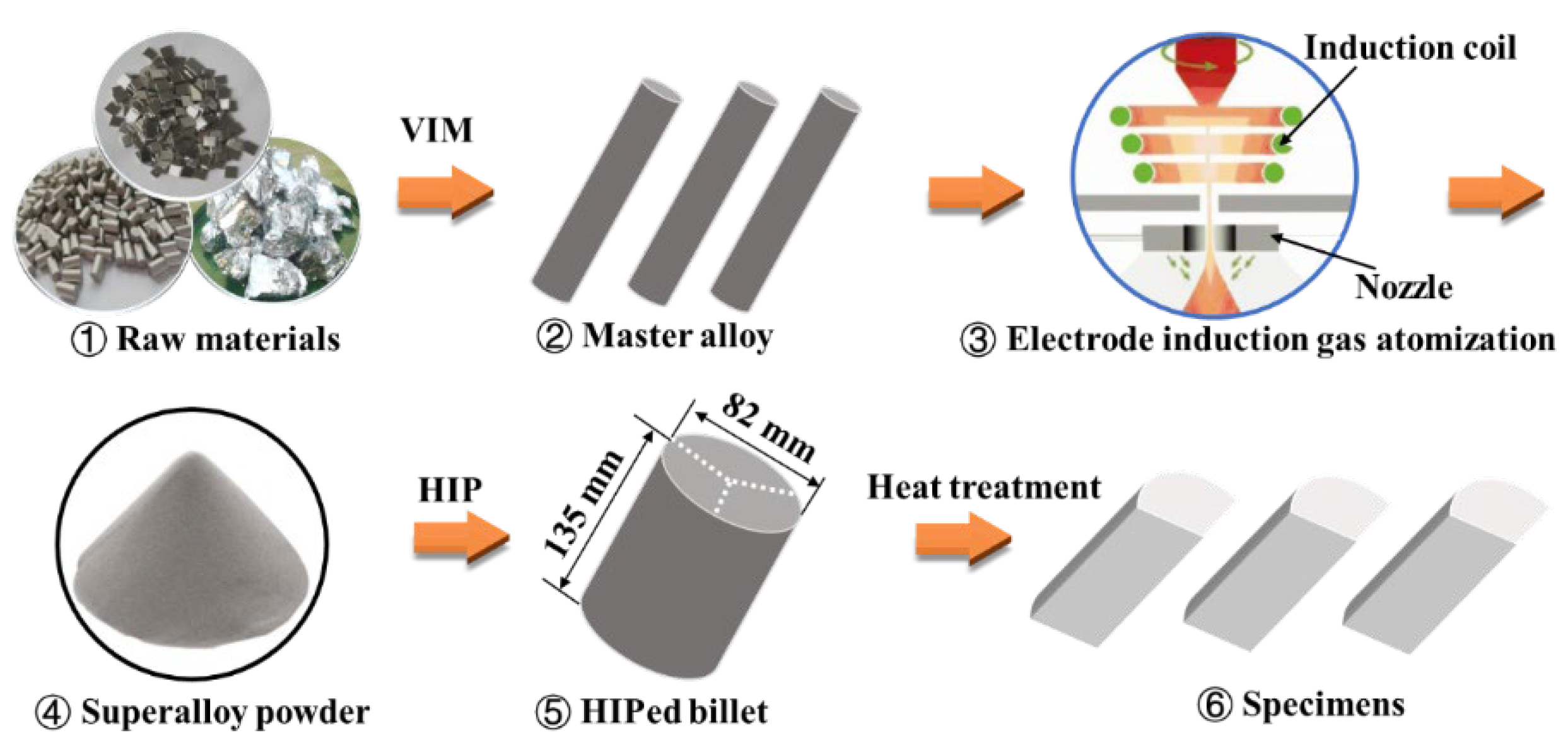
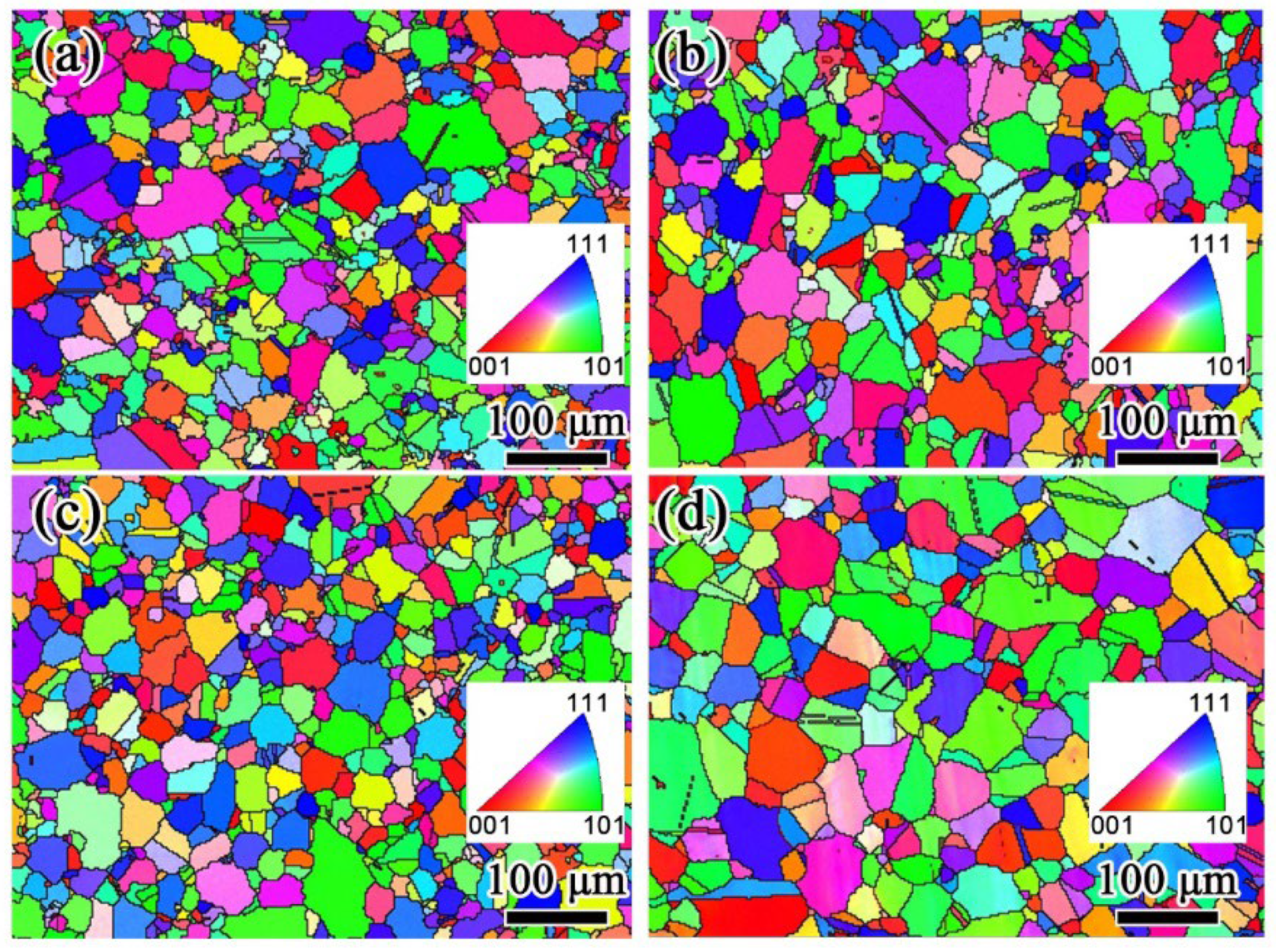
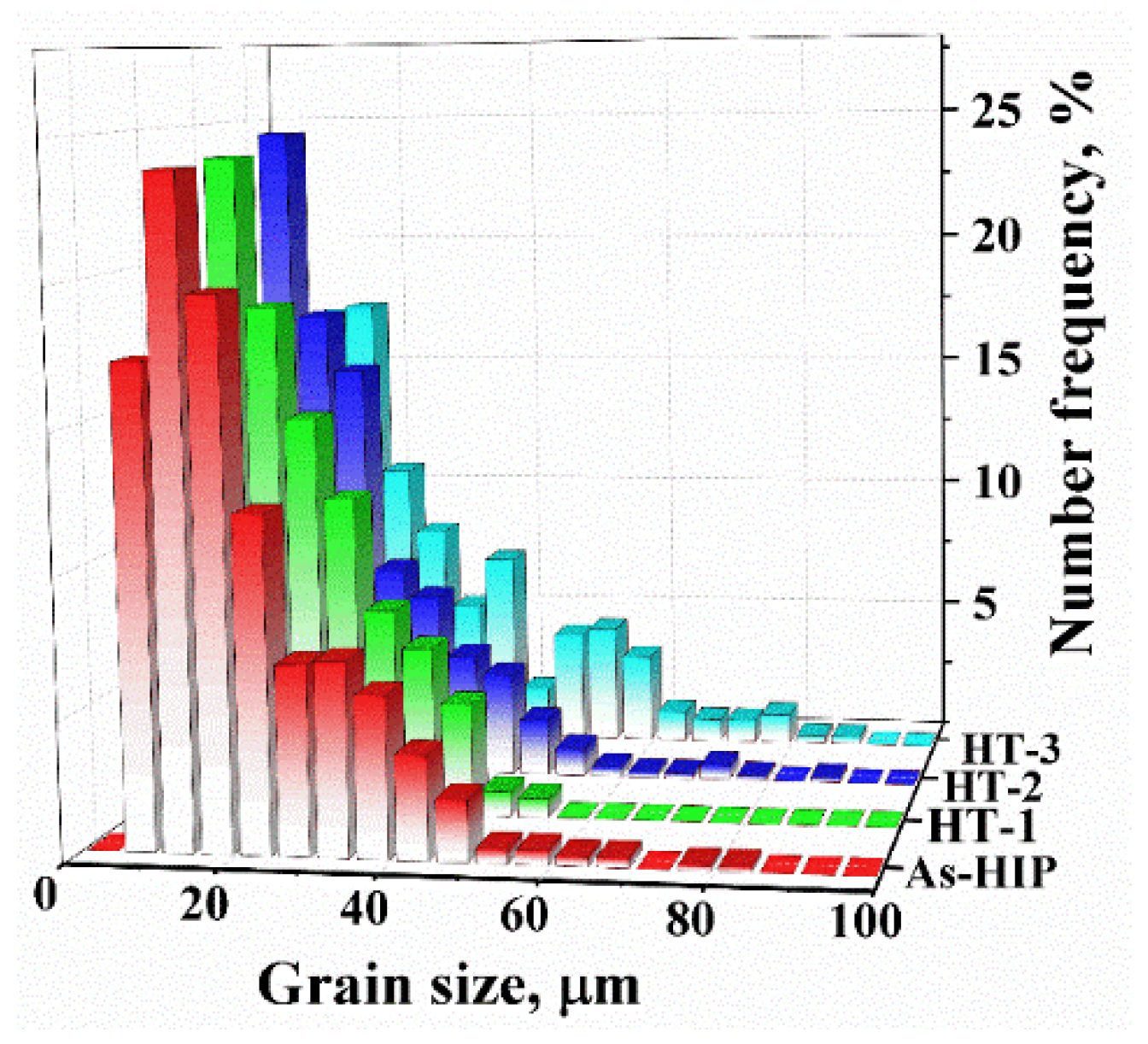
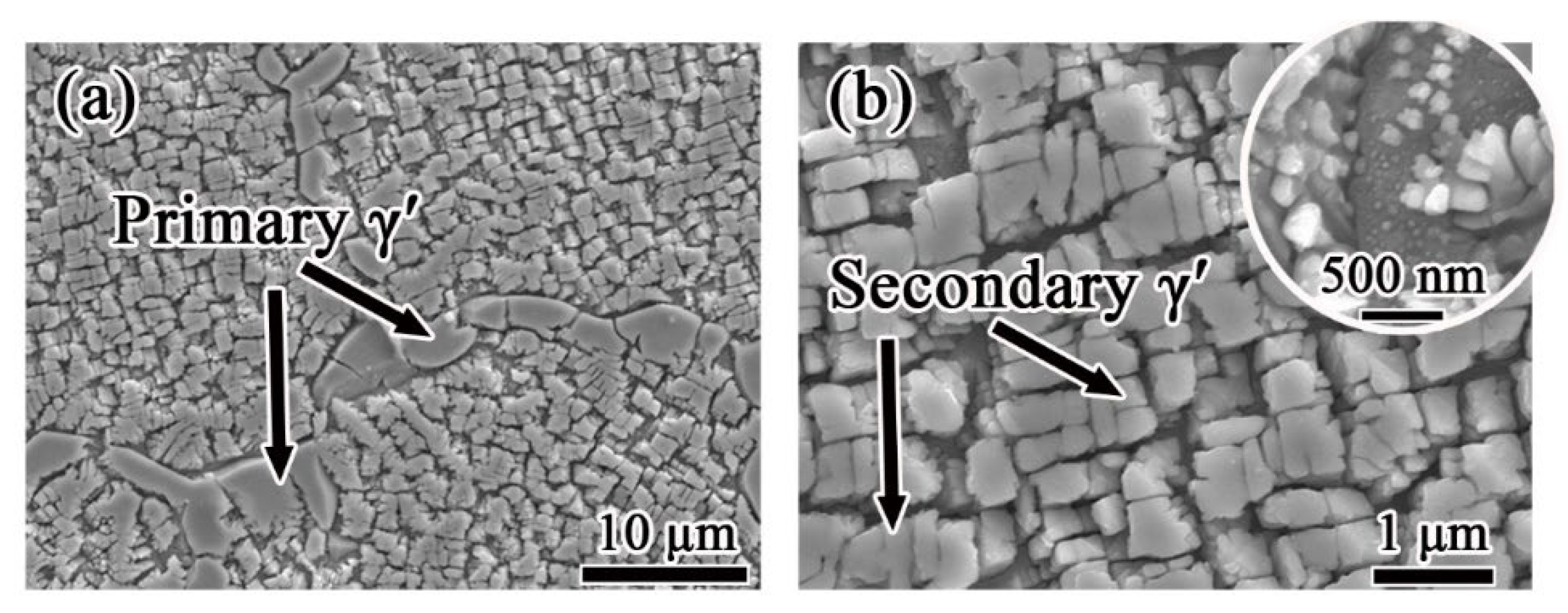
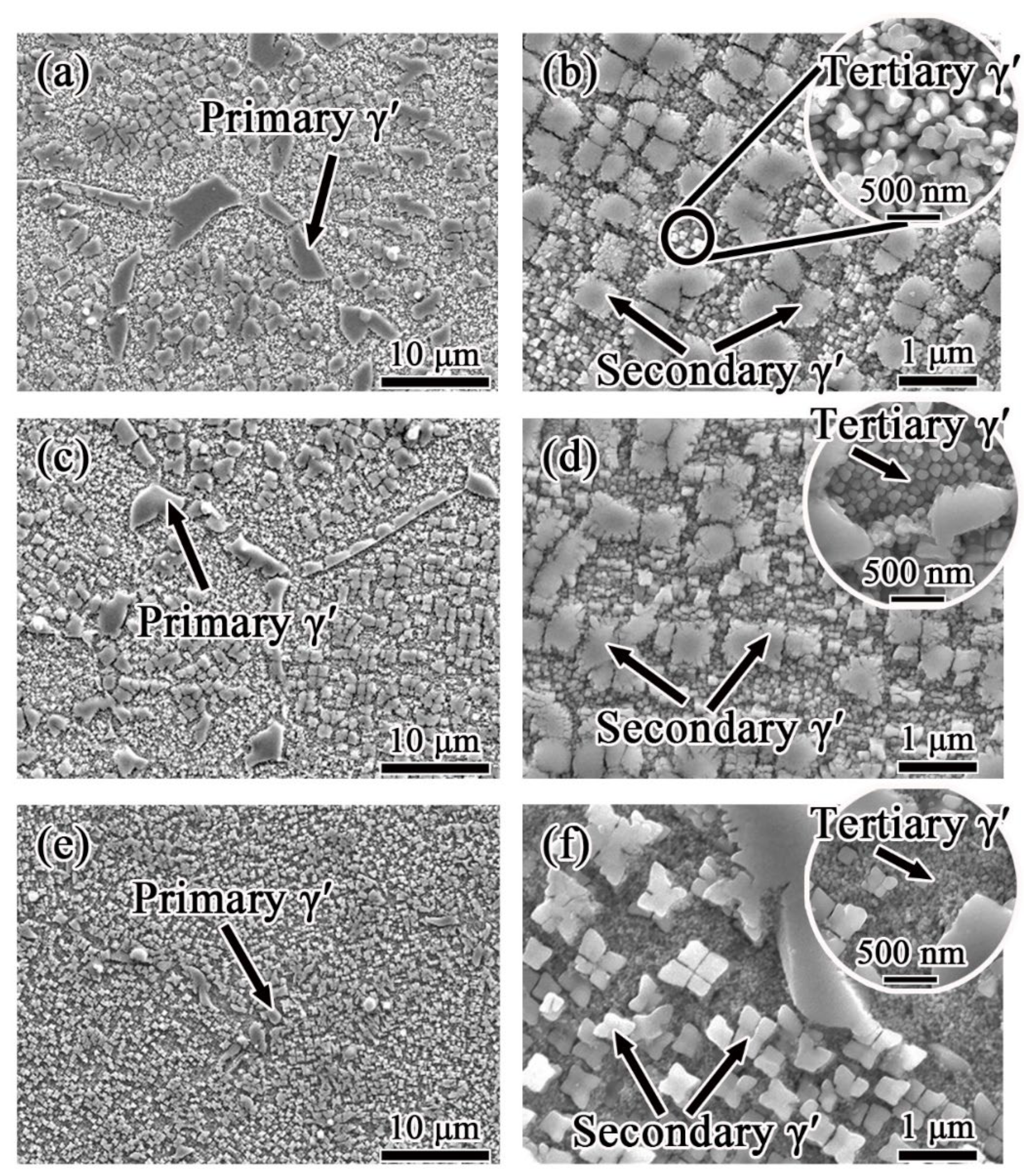

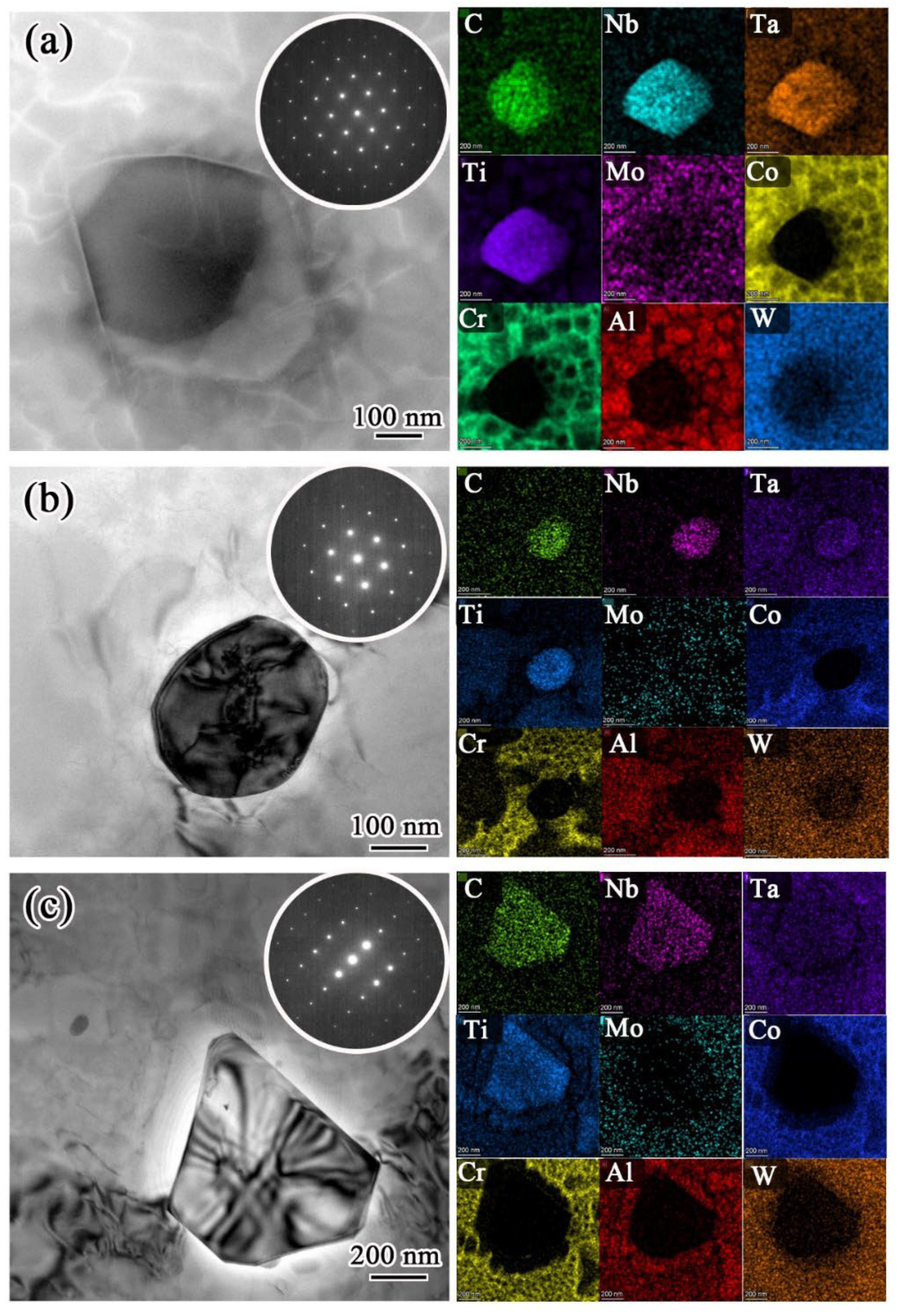
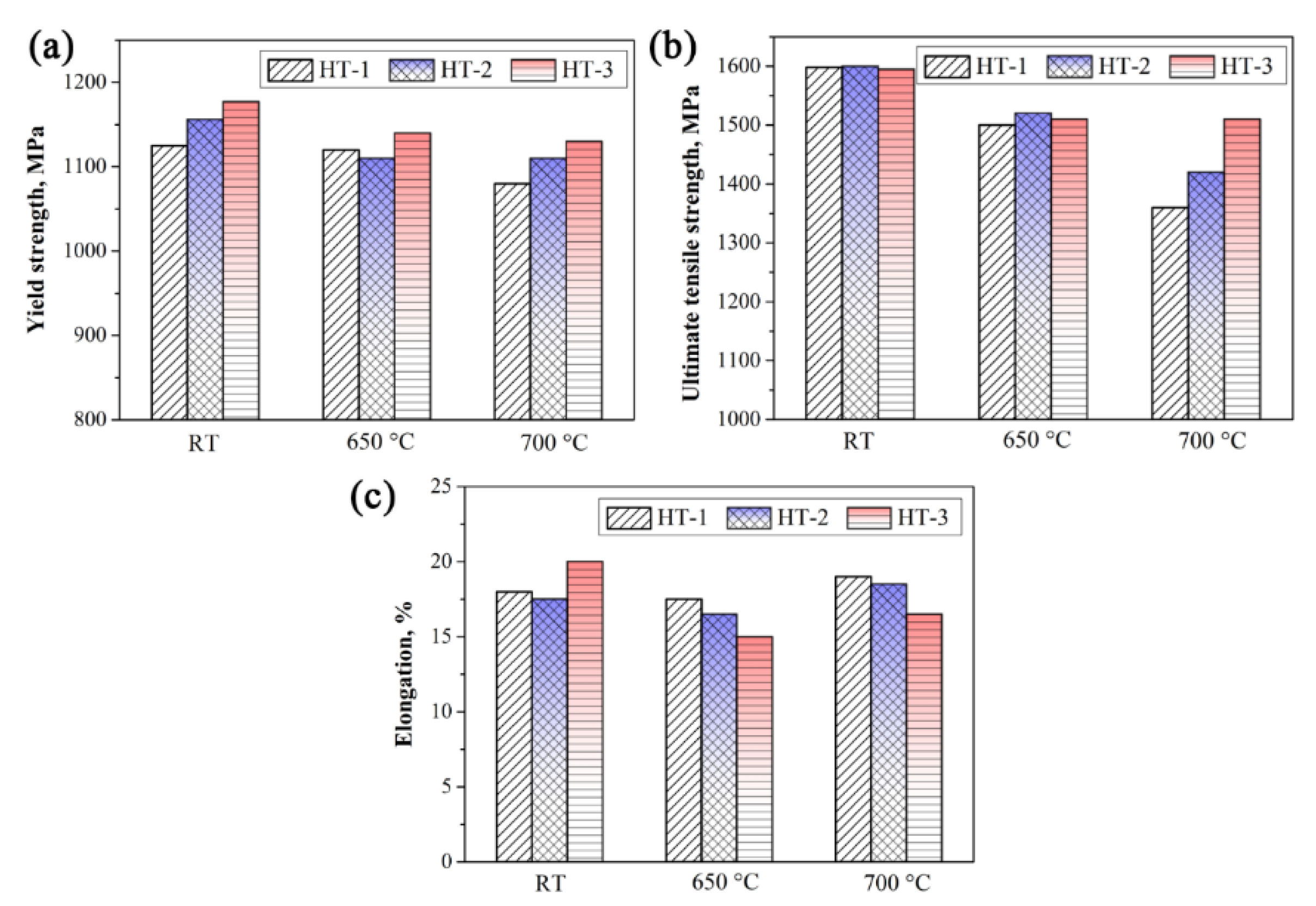

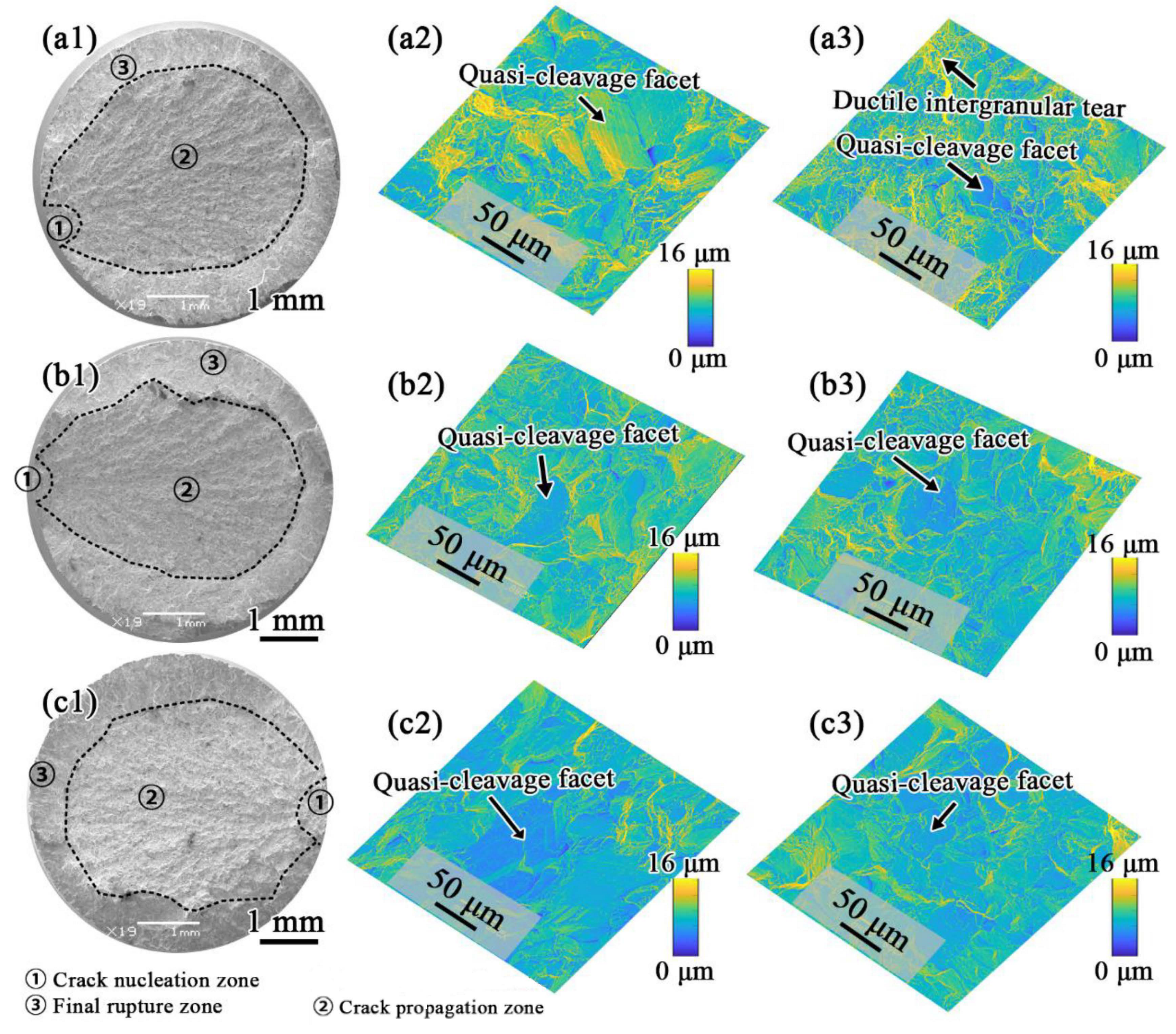

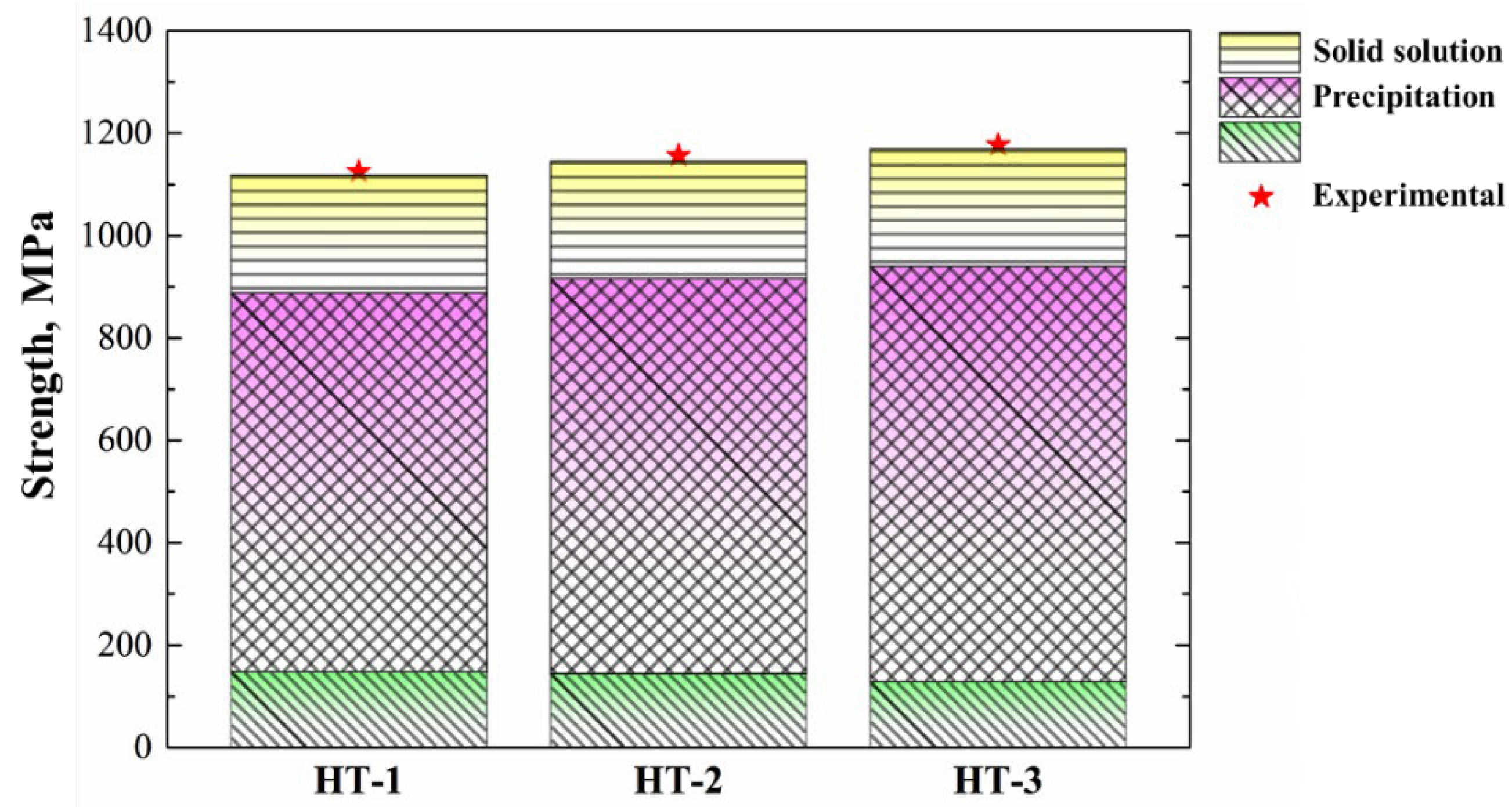
| Co | Cr | W | Al | Ti | Mo | Nb | Ta | C | B | Zr | Ni |
|---|---|---|---|---|---|---|---|---|---|---|---|
| 15.27 | 10.49 | 6.30 | 3.74 | 4.04 | 2.88 | 1.84 | 0.90 | 0.036 | 0.026 | 0.087 | Bal. |
| HIP | Solution | Aging | |
|---|---|---|---|
| As-HIP | 1200 °C/130 MPa/4 h | - | - |
| HT-1 | 1200 °C/130 MPa/4 h | 1160 °C/1.5 h/SA | 871 °C/4 h/AC + 760 °C/16 h/AC |
| HT-2 | 1200 °C/130 MPa/4 h | 1180 °C/1.5 h/SA | |
| HT-3 | 1200 °C/130 MPa/4 h | 1200 °C/1.5 h/SA |
| Ni | Al | Co | Cr | Mo | Nb | Ta | Ti | W | Zr | |
|---|---|---|---|---|---|---|---|---|---|---|
| γ | 41.019 | 1.566 | 25.816 | 27.681 | 1.718 | 0.041 | 0.013 | 0.186 | 1.952 | 0.008 |
| γ′ | 65.541 | 12.469 | 8.864 | 1.718 | 0.117 | 1.874 | 0.469 | 8.003 | 0.889 | 0.057 |
| Mo | W | Cr | Co | Nb | Ti | Al | Ta | Zr |
|---|---|---|---|---|---|---|---|---|
| 101.5 | 97.7 | 33.7 | 39.4 | 118.3 | 77.5 | 22.5 | 119.1 | 235.9 |
| Primary γ′ | Secondary γ′ | Tertiary γ′ | ||||
|---|---|---|---|---|---|---|
| Volume Fraction, % | Average Size, nm | Volume Fraction, % | Average Size, nm | Volume Fraction, % | Equivalent Diameter, nm | |
| HT-1 | 5.1 | 2.8 | 41.1 | 280 | 12.35 | 67 |
| HT-3 | 4.3 | 2.1 | 39.5 | 225 | 14.75 | 56 |
| HT-5 | 1.2 | 0.9 | 37.6 | 170 | 19.75 | 23 |
Publisher’s Note: MDPI stays neutral with regard to jurisdictional claims in published maps and institutional affiliations. |
© 2022 by the authors. Licensee MDPI, Basel, Switzerland. This article is an open access article distributed under the terms and conditions of the Creative Commons Attribution (CC BY) license (https://creativecommons.org/licenses/by/4.0/).
Share and Cite
Jia, J.; Zhang, Y.; Tao, Y.; Yan, T.; Ji, H. Effects of Solution Temperature on Tensile Properties of a High γ′ Volume Fraction P/M Superalloy. Materials 2022, 15, 5528. https://doi.org/10.3390/ma15165528
Jia J, Zhang Y, Tao Y, Yan T, Ji H. Effects of Solution Temperature on Tensile Properties of a High γ′ Volume Fraction P/M Superalloy. Materials. 2022; 15(16):5528. https://doi.org/10.3390/ma15165528
Chicago/Turabian StyleJia, Jian, Yiwen Zhang, Yu Tao, Ting Yan, and Hongyan Ji. 2022. "Effects of Solution Temperature on Tensile Properties of a High γ′ Volume Fraction P/M Superalloy" Materials 15, no. 16: 5528. https://doi.org/10.3390/ma15165528







